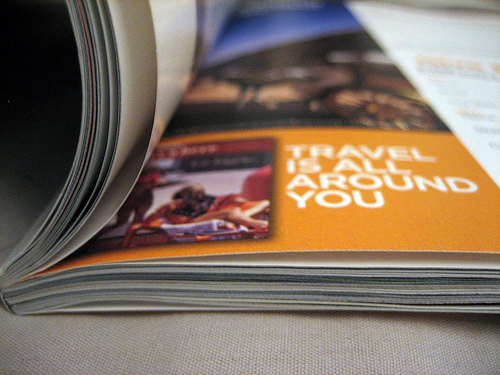So you want to flip open a magazine and see your article standing proud? Here are 10 tips to get your career started as a magazine journalist.
1. Find ideas to write about
– Sometimes finding an idea to write about can be the hardest part, but look into what interests you and what your hobbies are.
– Listen and watch people around you; you may just pick up an idea.
– Look at articles in the newspaper and create a completely different angle on the topics of the day.
2. Choose the right magazine
– Make sure the topic of your article works with the magazine, and that the tone and style fit in.
– Also remember to consider the readership such as their age and their interests. A highly scientific article won’t interest the features editor or the readers of Seventeen Magazine.
3. Check, check, check your facts!
– Firstly check to make sure your grammar and spelling are correct. Editors don’t want to spend time fixing your mistakes.
– Then double-check your research and your sources to make sure all your facts are correct. One mistake could mean the features editor never uses your articles again.
4. Be a professional magazine journalist
When making first contact, direct your article to the features editor by name and make sure you write a professional cover letter and biography. Make it simple for the editor – they have to read a lot of articles.
Also never beg, plead or be arrogant about your ‘amazing’ article. Be straightforward. And remember – do not bother editors at inconvenient times such as deadline week.
5. Stick to deadlines!
Stick to the deadline given to you. You want to make a good impression and get a good reputation as a magazine journalist.
6. Write your article ‘on spec’
To get started in the industry, writing the article ‘on spec’ and sending it to the editor is best, as they don’t know your writing capabilities and may not know whether you are up for the task. A full article will show your abilities.
7. Send off your article
Write a cover letter and don’t send your article as an attachment. If the editor does not know you they may think it is a virus, or simply be too busy to be interested. Your article in the body of the email encourages the editor to read it straight away – and if you have a good lead they’ll be hooked.
8. Follow up with the editor
Remember editors are busy so if you don’t get a response immediately, don’t panic. If after two weeks you haven’t received a response, then a quick email to the editor asking whether they have received the article is sufficient. Then wait some more. If more than a month has passed, make 100% sure the editor is not interested in the piece (either by phoning or emailing) before ‘tweaking’ the article to send off to another magazine.
9. Network with editors
Get to know the various features editors. If they know you and know your quality of work they are more likely to want your articles.
10. Try and try again
And the last tip is to try and try again. If a features editor doesn’t want your article, it doesn’t necessarily mean it was terrible; it may be that it doesn’t fit into that issue that they are working with.
If they say ‘no’, resend your article to another magazine and then another until you receive a ‘yes’.
Persistence is the key to getting published as a magazine journalist.
About the Author
Jezemae Cogan is a copywriter for an online tourism company and during her free time loves travelling and exploring new, interesting places. She enjoys dabbling on her blog about life, as well as learning new and fascinating things. Jezemae worked at Elle as a fashion intern and there grew her love and interest in feature writing.
Photo credit: wensday01














